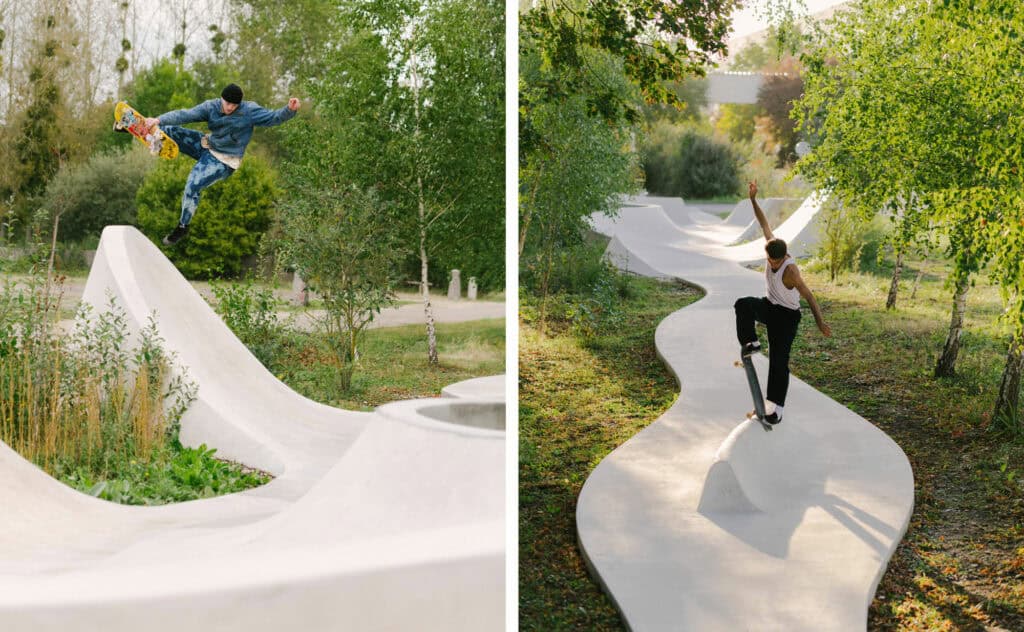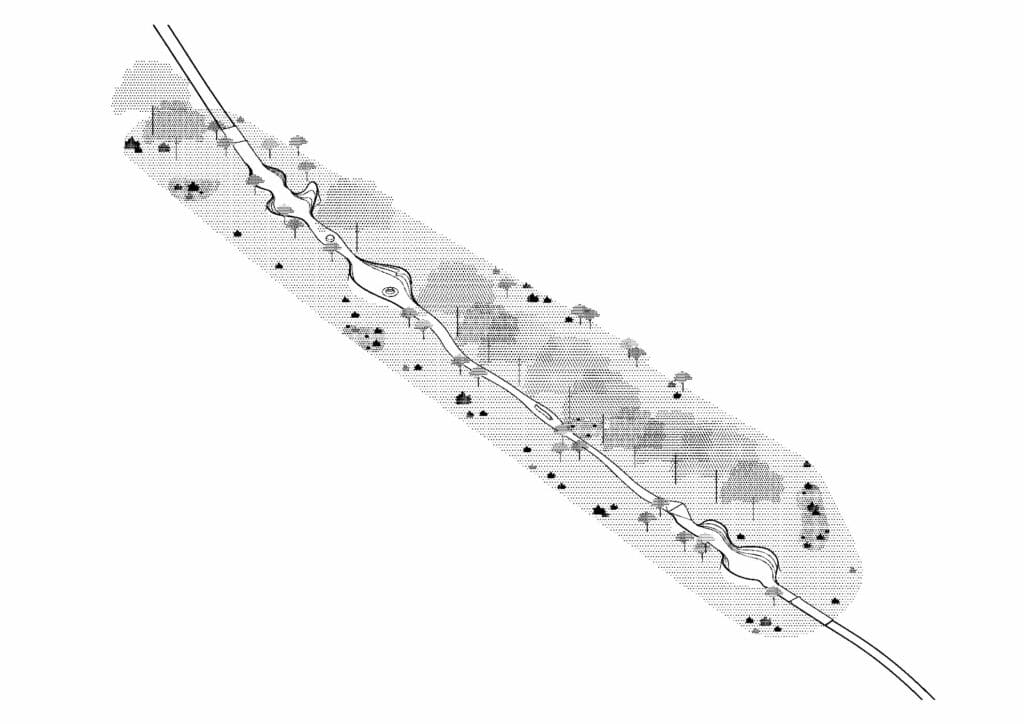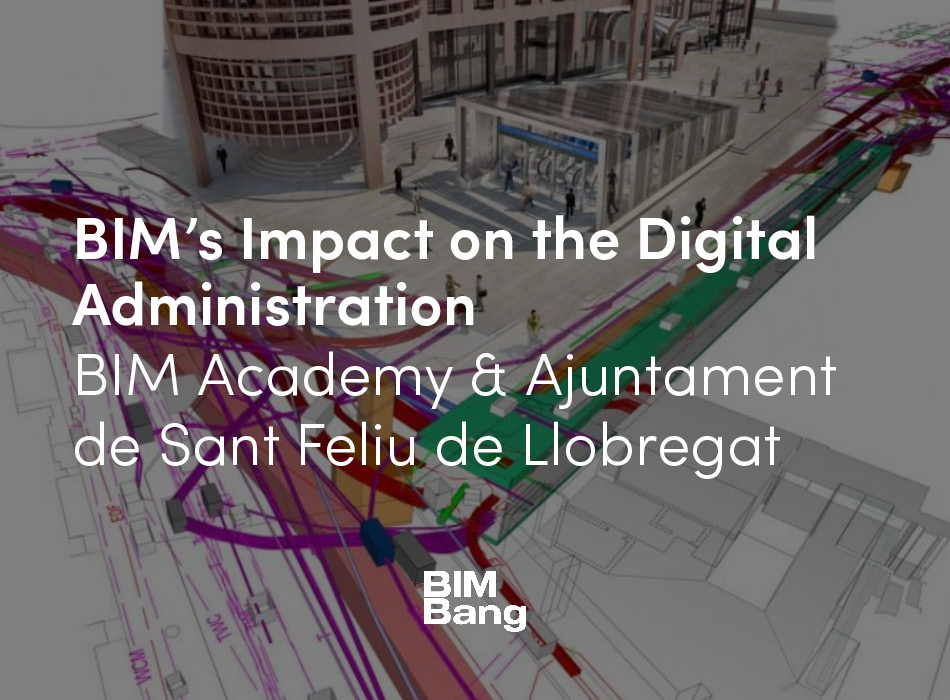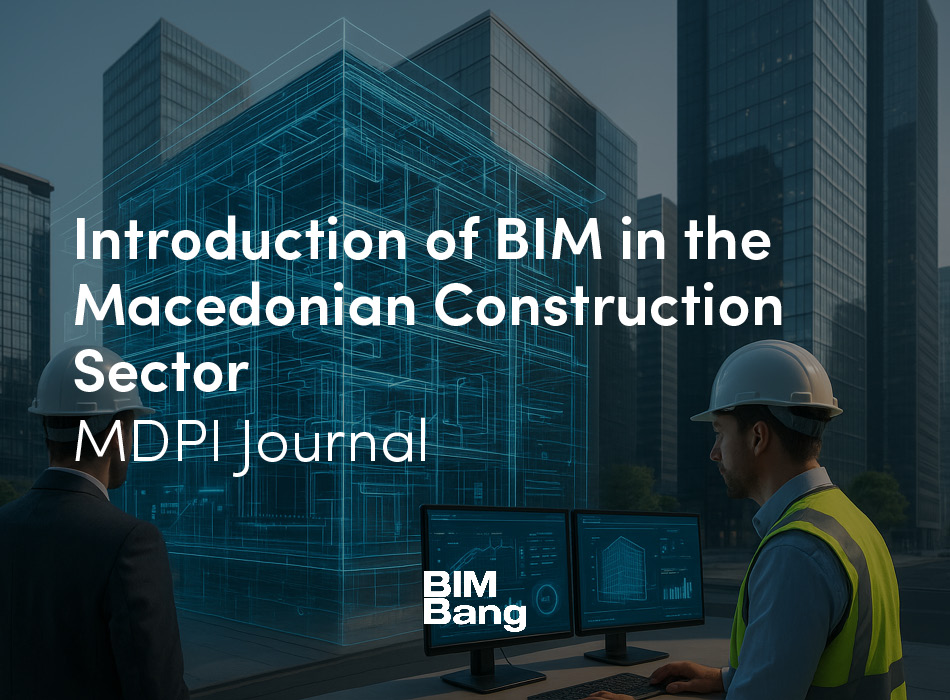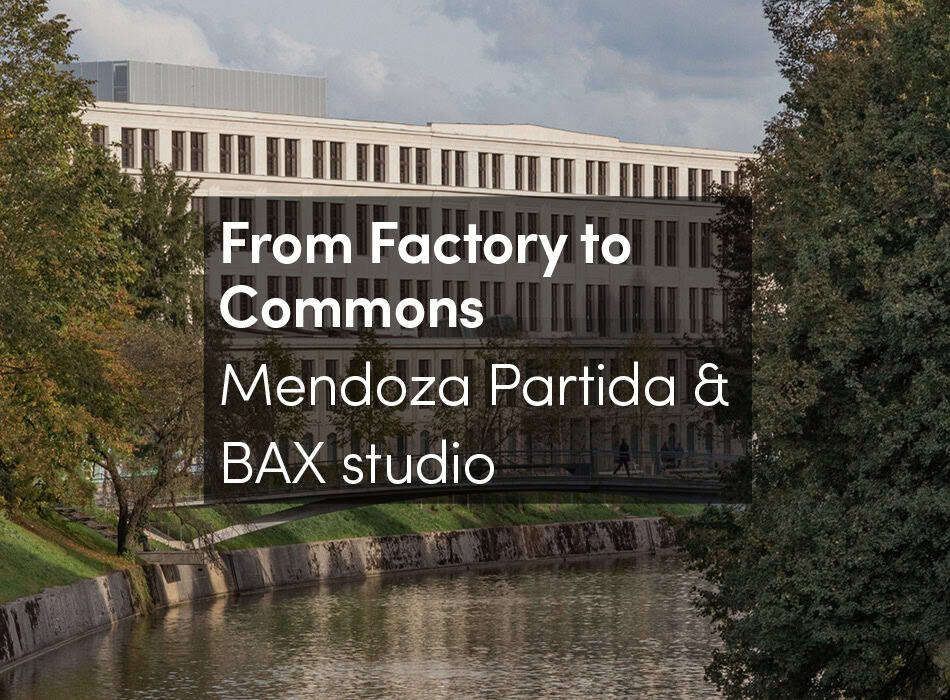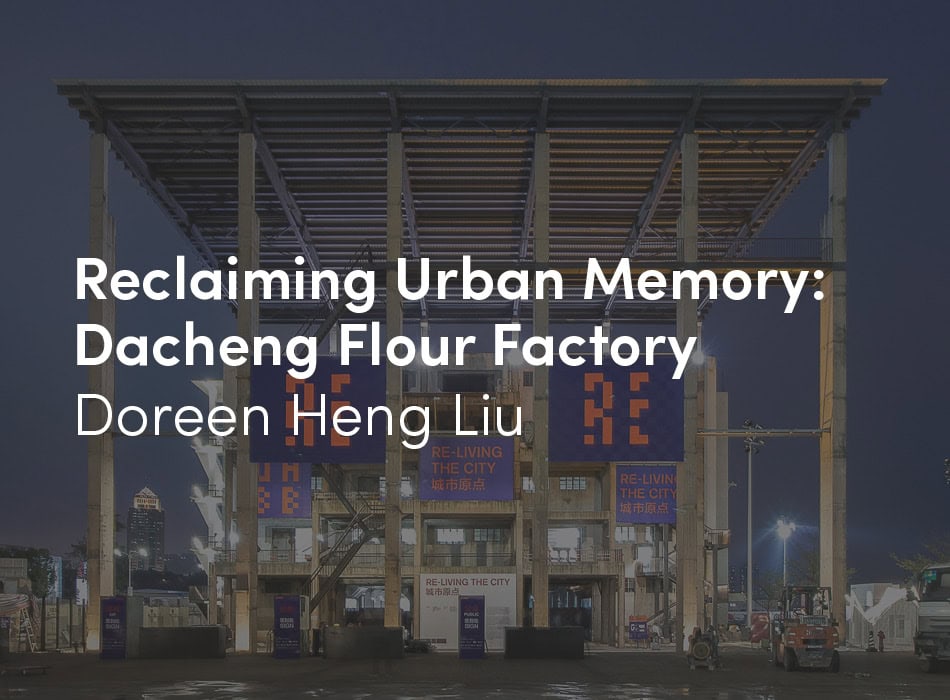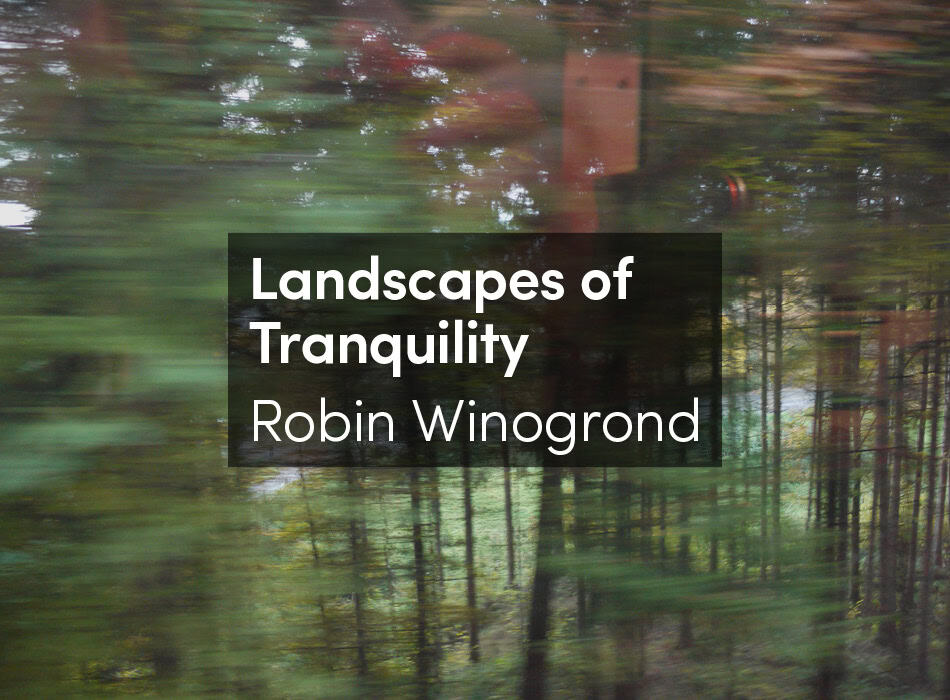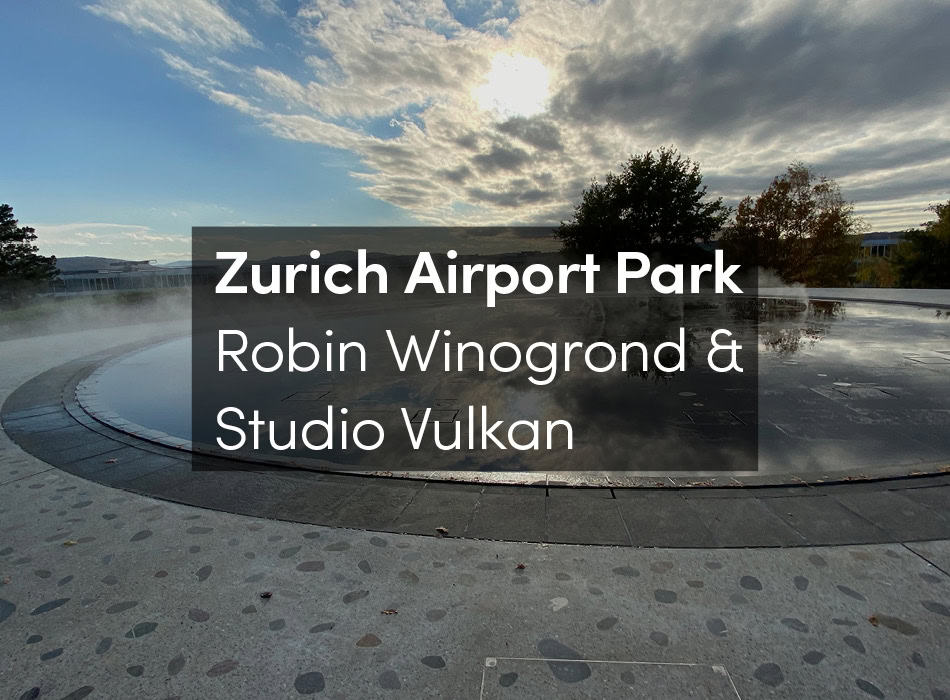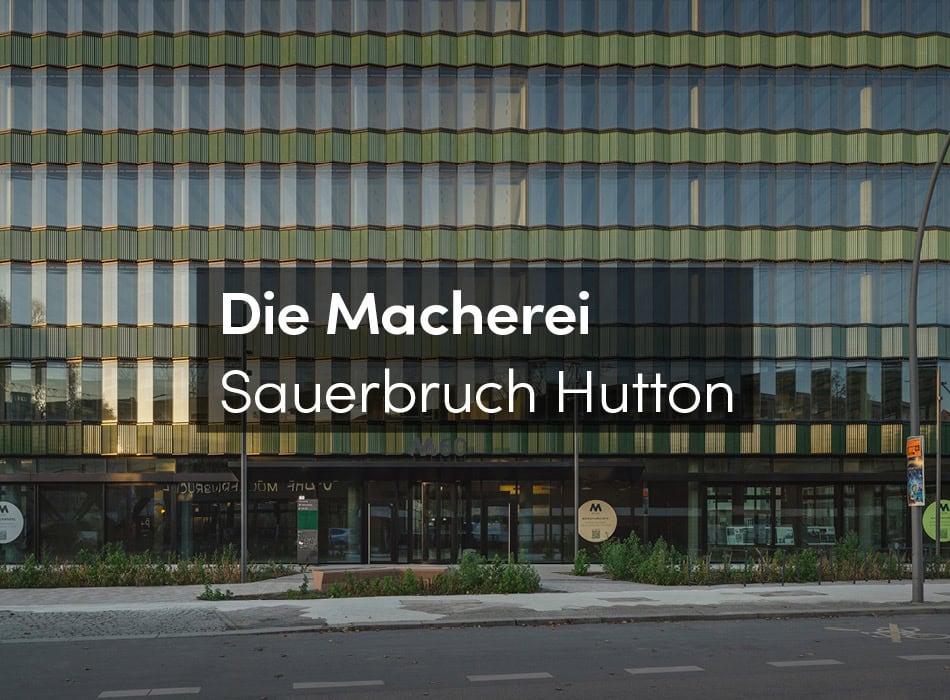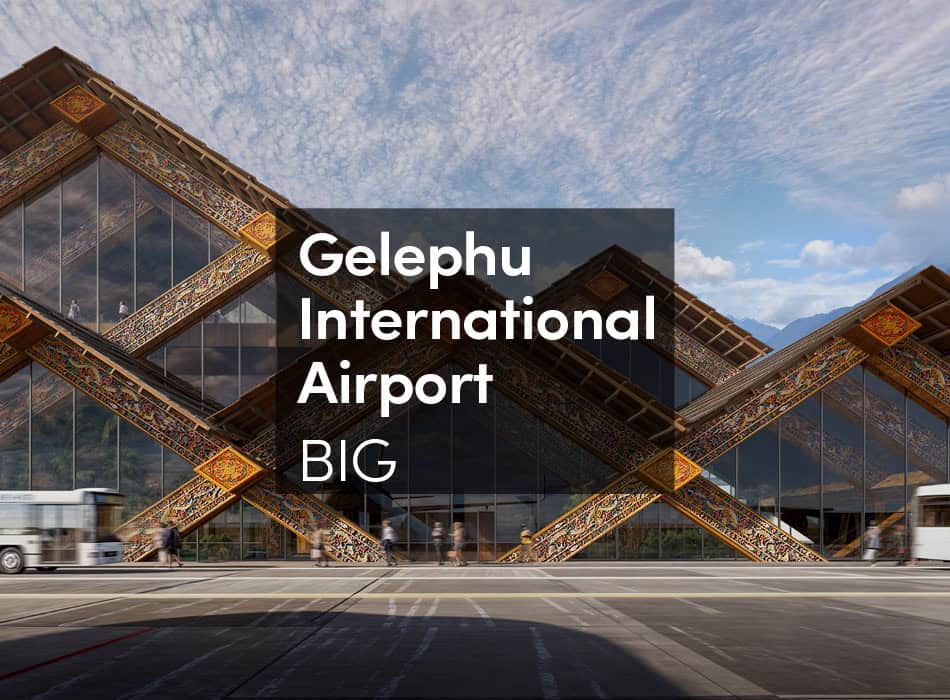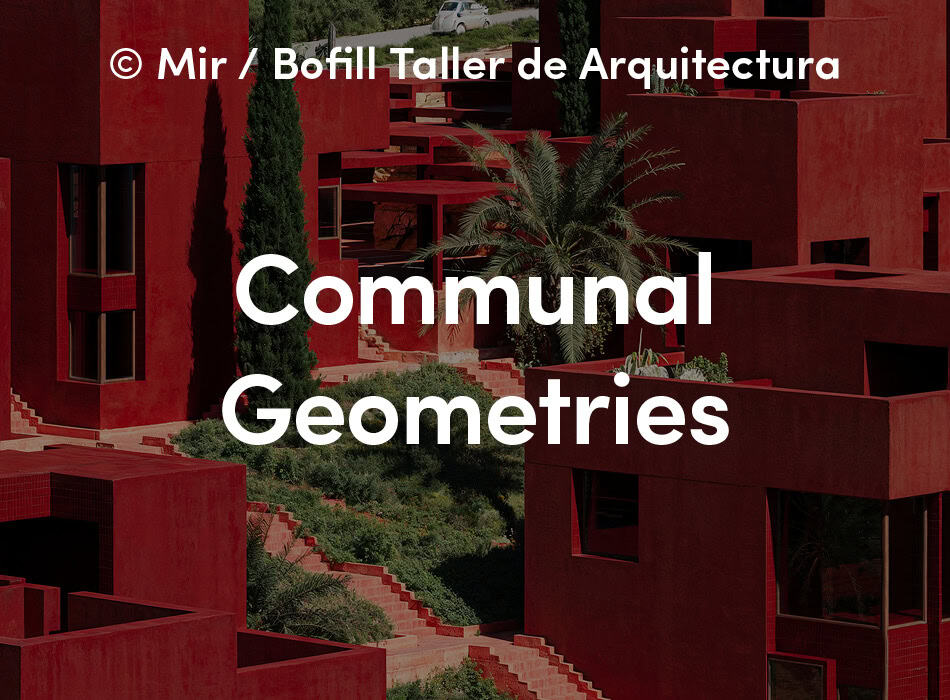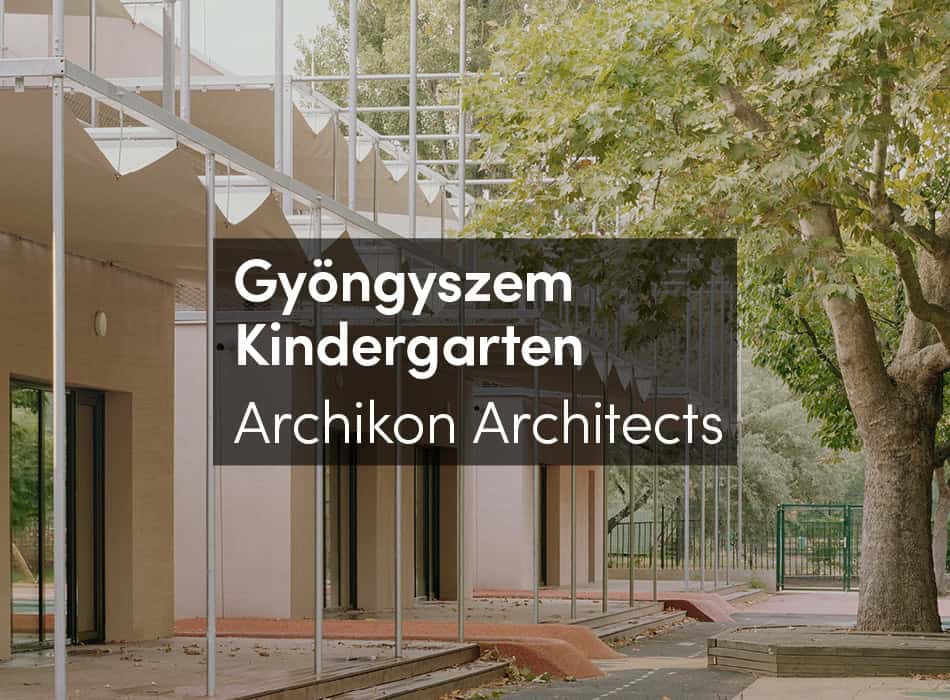For over a decade, MBL architectes has been engaged in the ongoing transformation of the former industrial site of the Boissy-le-Châtel mills into a contemporary art venue for Galleria Continua. Beyond the renovation of buildings designed to accommodate both the public and works of art, the project redefines the role of the industrial park within the broader landscape. Initiated in 2013, the landscape strategy has preserved the distinctive features of industrial wastelands. Forgotten remnants of past interventions—evident in the presence of horticultural plants and the spontaneous growth of endemic species—are integrated into a heterogeneous environment where architecture and vegetation coexist.
The skatepark project originated from research conducted on spatial environments shaped by skateboarding cultures. This study highlighted the structural and social potential of skateparks in shaping public space. Contrary to the idea of a specialized facility, skateparks were observed to function as inclusive social infrastructures—bringing together a diverse population, from children and teenagers to parents and spectators. These spaces accommodate a variety of skating practices, encouraging the formation of both transient communities and lasting relationships. It was precisely this quality of public engagement that informed the decision to construct a skatepark on the site. The intention was to attract a broader audience beyond the contemporary art public and to offer a shared space for local residents.
In parallel with these programmatic ambitions, the project engages in a formal investigation of the fluid geometries characteristic of the earliest skateparks of the 1970s. The surfaces of iconic sites such as Carlsbad and Concrete Wave—extensively analyzed by Iain Borden—evoke the contours of a petrified sea, referencing skateboarding’s origins in surfing. Prior to these, pools, reservoirs, and drainage pipes were among the first structures appropriated by skaters. These utilitarian concrete forms, initially intended to manage the flow of water, anticipated the expressive geometries that would later be explored by parametric architecture in the early 21st century. The skatepark draws on this genealogy, exploring the empirical logic of a non-standard architecture.
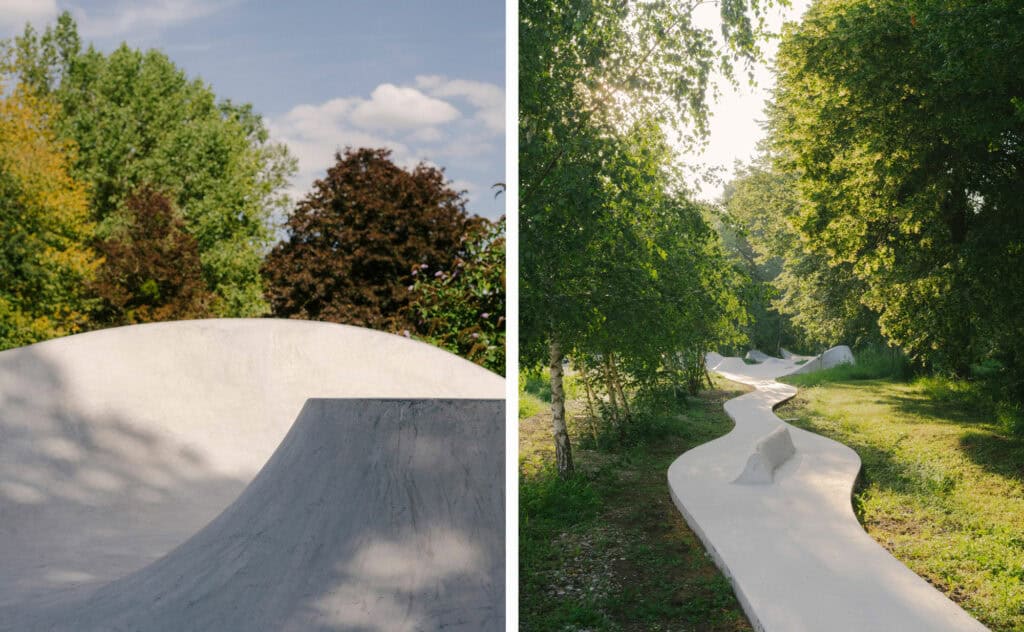
Designed as a continuous surface without elemental segmentation, the skatepark operates both as an infrastructural form within the landscape and as a spatial container. Positioned along a disused railway line that cuts through the site, it weaves among existing trees and shrubs. At its entrance, sculptural elements rise above the vegetation, marking its presence. Its elongated form acts as a connective tissue between scattered buildings across the former industrial area. The curved surface of raw concrete catches the changing shadows of linden trees, poplars, birches, and buddleias, which partially conceal it. Rather than adhering to a fixed blueprint, the design was guided by site-specific principles, responding directly to the terrain and existing plant life. The resulting form emerges from an interpretative reading of the landscape.
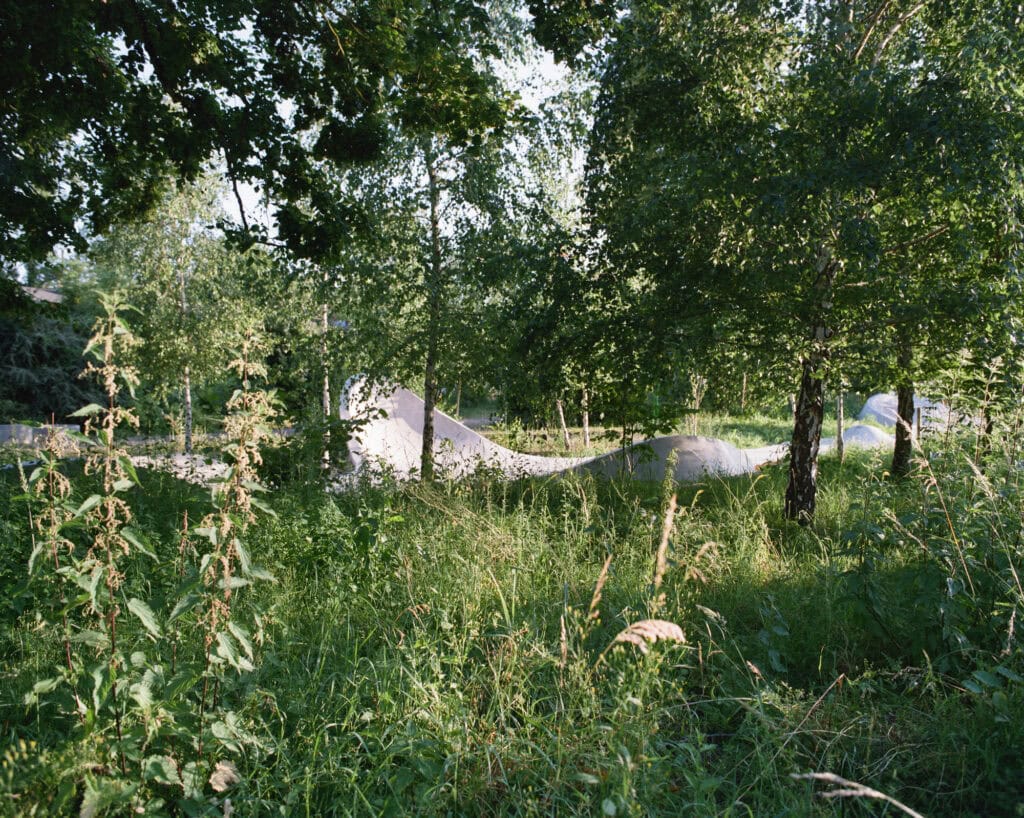
The construction process experiments with the potential of wet-process shotcrete as a flexible and dynamic building method. Here, steel reinforcements are assembled and welded on-site to create a complex framework that serves as both structure and guide. Unlike traditional concrete formwork, which relies on pre-established molds, shotcrete allows a sculptural application of material directly onto the mesh, facilitating a more adaptive and intuitive shaping process.
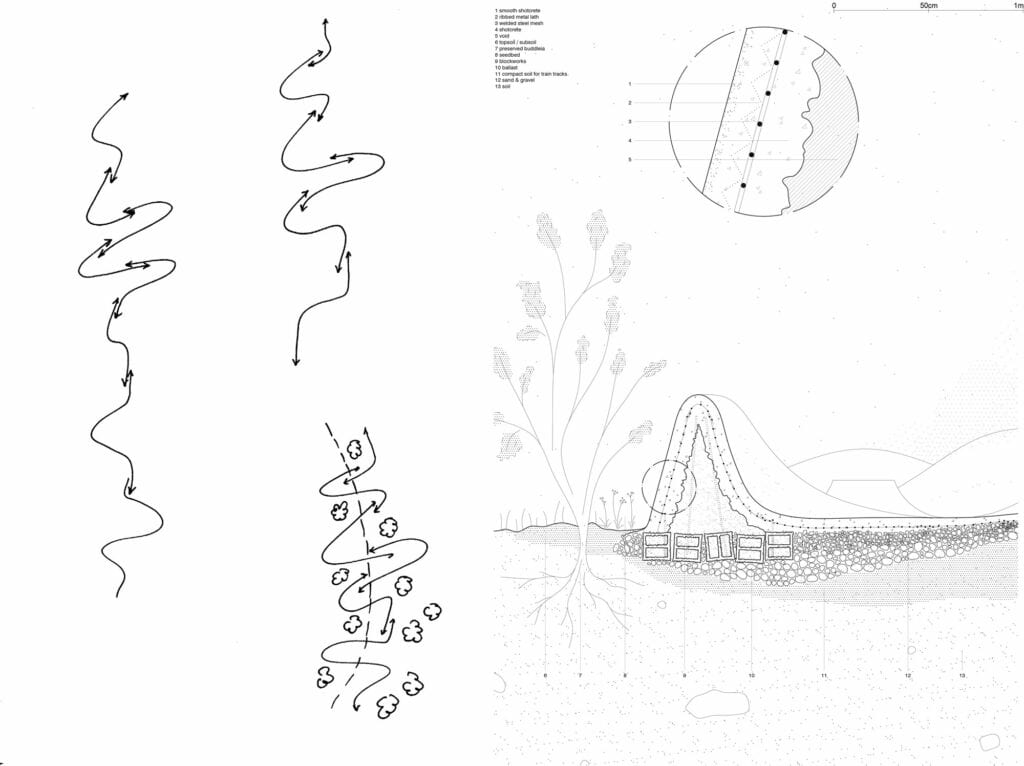
Although designed with specific physical constraints, the skatepark invites open-ended appropriation. Its surface accommodates advanced skating figures as well as casual postures of spectators. Skateparks inherently structure fields of vision, offering stages for performance and visibility. Central to skateboarding culture, film and photography document and disseminate tricks while simultaneously contributing to the mythos of skate spots. This image-centric dimension infuses the skatepark with a scenographic quality—it becomes not only a space of action but also of representation. In this sense, the skatepark operates as a performative medium, a device that emits images across a territory in search of a new identity.
